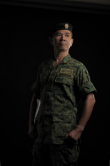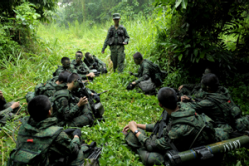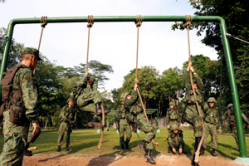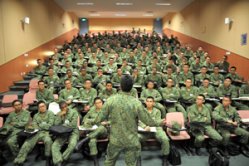OPS & TRAINING
WARRANT OFFICERS - A WEALTH OF POTENTIAL
11 Jun 2010
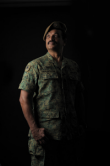
Following last year's review and enhancement of the warrant officers career scheme, PIONEER finds out more about the changes from two senior warrant officers (SWOs) who recently took on expanded roles and responsibilities.
The appointments of SWO Quek Ser Hiang and SWO Thalapathi s/o K Veeraiyan as chief instructors of the Singapore Armed Forces Warrant Officer School (SAFWOS) and the Specialist and Warrant Officer Advanced School (SWAS) respectively mark the first foray into previously unexplored territory for warrant officers. This is because these appointments were formerly held only by officers of the major or lieutenant colonel ranks.
As former Chief of Defence Force Lieutenant-General Desmond Kuek said in an interview with PIONEER early this year, the fundamental review of the SAF's career schemes served a single purpose: to build a stronger SAF and to realise the full potential of its people. And that is what the SAF hopes to achieve by offering warrant officers and specialists wider job scopes, more empowerment and greater responsibilities.
Armed with decades of experience, the two SWOs are perfect for the role of chief instructor, which is to keep training standards in check, review and update the present curriculum, as well as develop new ones. In realising their potential by passing on their knowledge, both SWO Quek and SWO Thalapathi will also ensure that training is optimised for both instructors and trainees.
Continuous learning
Previously a member of the directing staff, or what he calls the instructional team, SWO Quek has now become the team's leader. Besides overseeing the learning and training processes of the warrant officers under his charge, he now takes care of his instructors' professional and personal development.
"As an instructor, you have to keep abreast of what's happening in the world outside and a good way to do this is by continuing to take up courses to improve yourself, both in your professional and personal lives, so that younger specialists like the master sergeants and 3rd warrant officers will look up to you," said SWO Quek.
The 49-year-old believes that, as instructors, the directing staff ought to serve as role models of continuous learning and be well-versed in both international affairs and instructional pedagogies.
As a former directing staff, SWO Quek made sure he equipped himself with the requisite skills by constantly upgrading himself. Now, as chief instructor, he is pursuing this belief with renewed vigour: "It's my job to prompt my instructors and encourage everybody to clock at least 40 hours of training - be it enrolling in army-related courses or NIE (National Institute of Education) courses to stay current with what's happening in the latest Army policies and instructional pedagogies."
It is the same for SWO Thalapathi, who not only ensures that training requirements are met and training standards maintained, but also takes charge of improving the curriculum. As chief instructor of the SWAS, the 53-year-old is now involved in developing the training syllabus and coordinating the training means.
He sees himself as being responsible for his staff's development in terms of training skills and personal growth, and encourages them to upgrade their skills whenever possible.
Dream and honour
For SWO Quek, the chief instructor appointment was a dream come true: "This is what I've always aspired to do - to train our own people and have warrant officers take charge of the training of other warrant officers."
The signaller sees the promotion as a huge advancement opportunity and added: "I hope I can continue to value-add to the organisation with my experience and personal development, and that I can continue to take the instructor team to the next higher level to benefit more warrant officers."
For SWO Thalapathi, to be appointed as chief instructor is a great honour and he is grateful for the trust that the SAF has in him. "As the Chief Instructor of SWAS, I engage almost all the specialists in the Army through the PS (Platoon Sergeant) and CSM (Company Sergeant Major) courses and these are the best platforms for me to mould present and future leaders," he said.
"By developing well-rounded instructors through honing their technical and tactical proficiencies and sharpening their fundamental skills, everyone in the Warrant Officer Corps including myself will be able to contribute to maintaining and improving the Army's standards in training and operations," added the guardsman.
Describing his new appointment as chief instructor to be the highlight of his career, SWO Thalapathi sees it as "a milestone and a big step forward in paving the way for a new generation of warrant officers to take on higher appointments of this nature".
New roles, new responsibilities
In addition to the promotion of the SWOs to the role of chief instructor, three Master Trainer appointments were created to enable warrant officers to take charge of instructor development in the Corps. This new position has been taken up by two master warrant officers (MWOs) and a 1st warrant officer at the Training and Learning Systems branch under the Specialist and Warrant Officer Institute (SWI) in Pasir Laba Camp.
The master trainers at SWI conduct the Instructor Qualification Course for potential instructors ranging from 3rd sergeants to MWOs.
"The master trainer role was created to look at instructor readiness. If we want to introduce new pedagogies and technology, we need to focus on getting our instructors ready," said Lieutenant Colonel Luis Phay, the deputy commander of the SWI who also heads the Training and Learning Systems Branch.
These enhancements highlight the Army's strong emphasis on warrant officers and specialists taking on the role of trainers. They are also in line with the changes that have been made to the Warrant Officers Career Scheme - such as the introduction of the 3rd warrant officer rank - to meet the needs of the 3rd Generation SAF and to enhance leadership among rank-and-file soldiers.
SISPEC revamped and renamed
The School of Infantry Specialists (SISPEC) went through a massive restructuring as of 13 Apr that split the school into four: three Specialist Cadet Schools (SCSs) and the Specialist and Warrant Officer Advanced School (SWAS) - the former Advanced Section Training Wing.
This restructuring of the training institute at Pasir Laba Camp essentially means enhanced supervision and mentorship for specialist cadets, a richer curriculum and newer pedagogy.
In the past, one commanding officer was responsible for all 12 companies in SISPEC. Now one commanding officer is in charge of four companies.
"Under the new structure, you have six officers to three schools - each school has a commanding officer and a school 2IC (2nd-in-charge) - looking after everybody, so your reach and engagement are different," said Lieutenant Colonel (LTC) Luis Phay, the deputy commander of the Specialist and Warrant Officer Institute.
A key feature of the SCSs is the concept of a centralised teaching strength. Depending on their specialisations, instructors are assigned to either the command team which develops cadets' behavioural competencies comprising soft skills such as leadership qualities, discipline, and commitment to defence, or the faculty team which imparts technical skills to the cadets.
"In the past, all the instructors were held under one company and were masters of all trades... Now, every instructor focuses on one or two core training subjects. We also brought in expertise from outside the SAF," said LTC Phay who was part of the team which spearheaded the transformation of SISPEC to SCSs.
From conceptualisation to implementation, the reorganisation took the team two years during which its members studied the models of similar training schools both here and abroad and adopted their best practices.
Under the former SISPEC, instructors conducted the Basic Section Leader Course (BSLC) and the Advanced Section Leader Course (ASLC) to groom junior specialists, but today's SCSs boast holistic training through the Specialist Cadet Course (SCC) which adopts a three-phase approach. Cadets embark on the SCC, following the successful completion of their Basic Military Training.
The SCC begins with an eight-week foundation term where cadets first receive common training which involves cultivating leadership skills and developing combatant competencies. This is followed by a 12.5-week professional term where cadets are sent to the respective training institutes for specific vocational training.
The last phase is the 1.5-week combined arms term where cadets learn about combined arms operations through experiential sharing and immersion.
Previously under SISPEC, trainees earned their corporal ranks at the end of their eight-week BSLC and thereafter, they attained their 3rd sergeant ranks at the end of their 13-week ASLC. With the new 22-week SCC, cadets are awarded their 3rd sergeant ranks after completing all three phases.
Said LTC Phay of the restructuring: "We now have not only more people, but quality people in the team, so I think that itself makes us better able to adapt to changes".
"Under the new structure, you have six officers to three schools - each school has a commanding officer and a school 2IC (2nd-in-charge) - looking after everybody, so your reach and engagement are different," said Lieutenant Colonel (LTC) Luis Phay, the deputy commander of the Specialist and Warrant Officer Institute.
A key feature of the SCSs is the concept of a centralised teaching strength. Depending on their specialisations, instructors are assigned to either the command team which develops cadets' behavioural competencies comprising soft skills such as leadership qualities, discipline, and commitment to defence, or the faculty team which imparts technical skills to the cadets.
"In the past, all the instructors were held under one company and were masters of all trades... Now, every instructor focuses on one or two core training subjects. We also brought in expertise from outside the SAF," said LTC Phay who was part of the team which spearheaded the transformation of SISPEC to SCSs.
From conceptualisation to implementation, the reorganisation took the team two years during which its members studied the models of similar training schools both here and abroad and adopted their best practices.
Under the former SISPEC, instructors conducted the Basic Section Leader Course (BSLC) and the Advanced Section Leader Course (ASLC) to groom junior specialists, but today's SCSs boast holistic training through the Specialist Cadet Course (SCC) which adopts a three-phase approach. Cadets embark on the SCC, following the successful completion of their Basic Military Training.
The SCC begins with an eight-week foundation term where cadets first receive common training which involves cultivating leadership skills and developing combatant competencies. This is followed by a 12.5-week professional term where cadets are sent to the respective training institutes for specific vocational training.
The last phase is the 1.5-week combined arms term where cadets learn about combined arms operations through experiential sharing and immersion.
Previously under SISPEC, trainees earned their corporal ranks at the end of their eight-week BSLC and thereafter, they attained their 3rd sergeant ranks at the end of their 13-week ASLC. With the new 22-week SCC, cadets are awarded their 3rd sergeant ranks after completing all three phases.
Said LTC Phay of the restructuring: "We now have not only more people, but quality people in the team, so I think that itself makes us better able to adapt to changes".
The Combined Arms Term
The 1.5-week Combined Arms Term or CAT is the third and final phase in the newly-introduced Specialist Cadet Course (SCC), which prepares specialist cadets for their role as specialists in the Singapore Armed Forces.
While the SCC's foundation term and professional term replace the Basic Section Leader Course and Advanced Section Leader Course respectively under the former School of Infantry Specialists, the CAT is a new phase. This final phase brings the trainees back together to promote a better understanding of the workings and operational requirements of the different formations.
"We arrange for a good mix of cadets from various formations to share with each other the experiences they encountered and they can relate to each other because they belong to the same group of people who have undergone their foundation term together. This immersion is a powerful one," said Master Warrant Officer Shamsuddin Bin Isnin, a master trainer at the Specialist and Warrant Officer Institute's Training and Learning Systems Branch.
In addition, a large part of the CAT is made up of the leadership effectiveness programme where cadets are equipped with the skills to excel as junior commanders. They learn to polish their soft skills like management and motivational skills and also engage in peer-to-peer sharing.
ALSO READ IN OPS & TRAINING
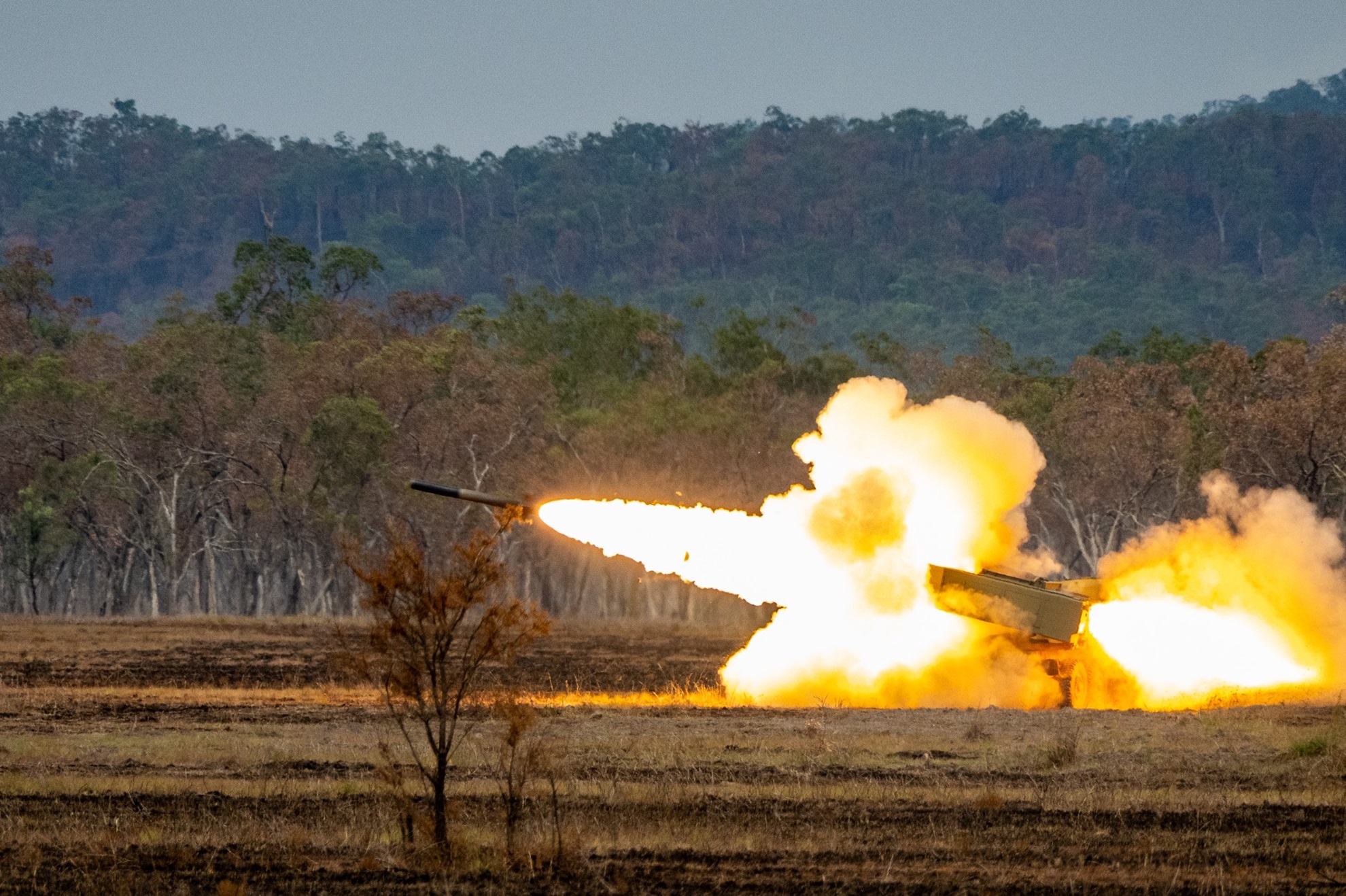
Exercise Wallaby 2025: To see better, shoot faster
31 Oct 2025
The SAF focuses on complex strike missions and multi-domain integration in Exercise Wallaby 2025, the 35th edition of its largest unilateral overseas exercise.
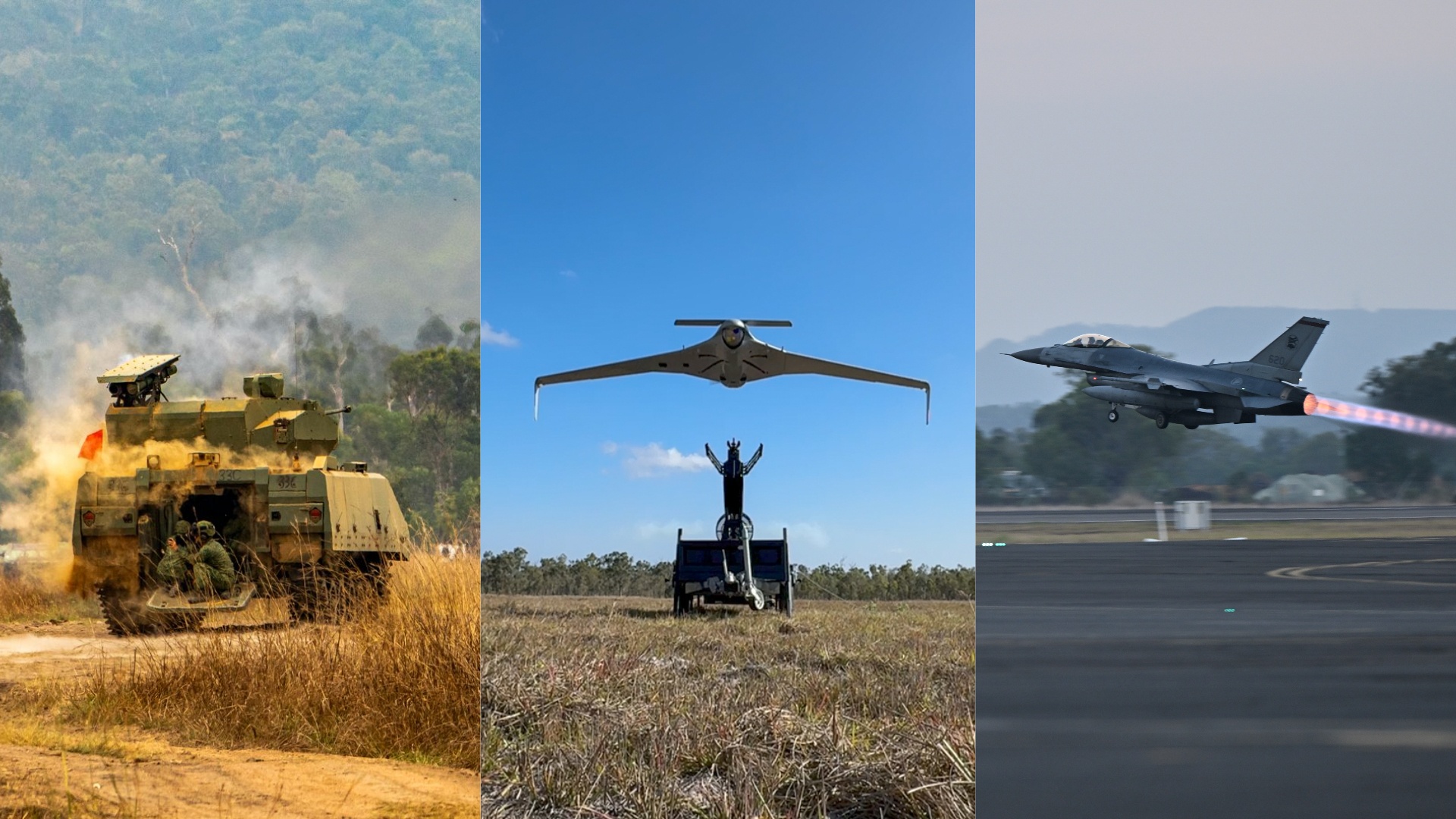
Ex Wallaby 25 – Greater Integration and Complexity
25 Oct 2025
The 35th edition of the SAF’s largest unilateral overseas exercise is an opportunity for expanded scale and deeper integration towards an effective, networked fighting force.

Ex Forging Sabre ramps up use of unmanned assets in integrated strike operations
12 Sep 2025
In this 10th edition of Exercise Forging Sabre, the SAF sharpened its cutting edge for the dynamic modern battlefield, with expanded integration between manned and unmanned platforms.


